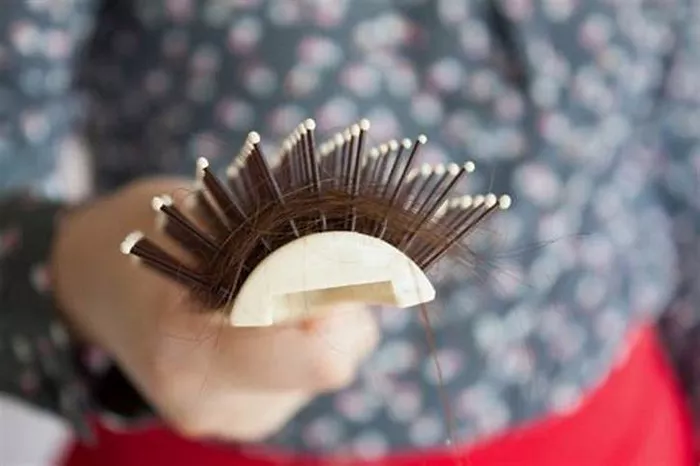The quest for a full and vibrant head of hair is a timeless pursuit, and for many, it becomes a more pressing concern as they enter their thirties. Hair thinning or loss can be a source of distress, prompting individuals to seek solutions to rejuvenate their locks. In this exploration, we delve into the possibilities of regrowing hair after the age of 30, examining the factors at play, dispelling myths, and shedding light on contemporary approaches that offer hope for those yearning for a resurgence of their crowning glory.
Understanding the Dynamics of Hair Growth Post-30
As individuals transition into their thirties, various factors can influence the health and density of their hair. While some degree of hair thinning may be attributed to natural aging processes, it’s essential to distinguish between normal age-related changes and potentially reversible conditions.
The hair growth cycle involves phases of growth, transition, and rest. Hair loss becomes more noticeable when the balance between these phases is disrupted. Recognizing the contributing factors is crucial in exploring the potential for regrowth.
Genetic Predisposition: The Influence of Family History
Genetics plays a significant role in hair health, and family history often dictates the likelihood of experiencing hair loss. If there’s a pattern of baldness or thinning hair among close relatives, especially parents or grandparents, it increases the probability of a similar occurrence.
While genetic factors are challenging to alter, understanding the family’s history of hair loss can guide individuals in managing expectations and exploring interventions that may mitigate further thinning.
Hormonal Influences: Navigating Changes
Hormonal fluctuations continue to play a role in hair health beyond the twenties. In their thirties, both men and women may experience shifts in hormone levels. For instance, women may undergo changes related to pregnancy, childbirth, or the onset of menopause, while men may face alterations in testosterone levels.
Addressing hormonal imbalances through consultation with healthcare professionals can contribute to maintaining a conducive environment for hair growth.
Nutritional Considerations: Fueling Hair Follicles
Nutrition plays a pivotal role in overall health, and the same applies to the health of hair follicles. A balanced diet rich in essential nutrients, including vitamins, minerals, and proteins, supports optimal hair growth.
Incorporating a nutrient-dense diet, or in some cases, dietary supplements, can address potential nutritional deficiencies and provide the building blocks necessary for hair regeneration.
Lifestyle Factors: Mitigating Modern Stressors
The demands of contemporary life, marked by stress and lifestyle factors, can take a toll on hair health. Chronic stress, inadequate sleep, and exposure to environmental toxins can contribute to hair thinning.
Implementing stress management techniques, prioritizing sufficient sleep, and adopting a hair-friendly lifestyle can create a more conducive environment for regrowth.
Advancements in Treatments: Contemporary Approaches
The landscape of hair restoration has evolved significantly, offering a range of contemporary approaches for regrowth. FDA-approved medications, such as minoxidil and finasteride, have demonstrated efficacy in promoting hair growth and preventing further loss. These medications work by stimulating hair follicles and blocking the hormone dihydrotestosterone (DHT), which is associated with hair thinning.
Advanced treatments like platelet-rich plasma (PRP) therapy and low-level laser therapy (LLLT) have gained popularity for their potential to stimulate hair follicles and encourage regrowth. PRP involves injecting a concentration of a patient’s platelets into the scalp, while LLLT utilizes low-level lasers or light-emitting diodes to stimulate cellular activity in hair follicles.
Conclusion: Navigating the Path to Regrowth After 30
The question of whether it’s possible to regrow hair after 30 is nuanced, influenced by a combination of genetic predisposition, hormonal dynamics, nutrition, lifestyle, and the advancements in treatment options. Recognizing the interplay of these factors empowers individuals to take proactive steps toward revitalizing their locks.
While genetic factors may set certain limitations, contemporary treatments, and lifestyle modifications offer promising avenues for regrowth. Consulting with healthcare professionals, dermatologists, or specialists in hair restoration can provide personalized insights and guide individuals toward effective regenerative strategies.
In conclusion, the journey to regrowing hair after 30 is multifaceted, and success lies in understanding individual circumstances and employing a holistic approach. With the convergence of scientific advancements and proactive lifestyle choices, the possibility of reclaiming a lush and healthy mane is within reach for many, ushering in an era of renewed confidence and self-assurance.

